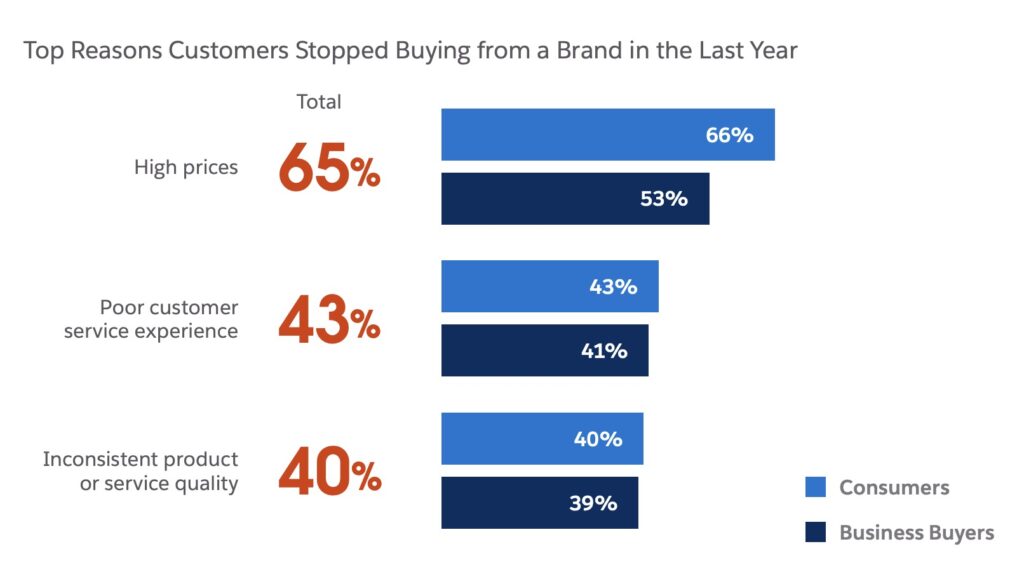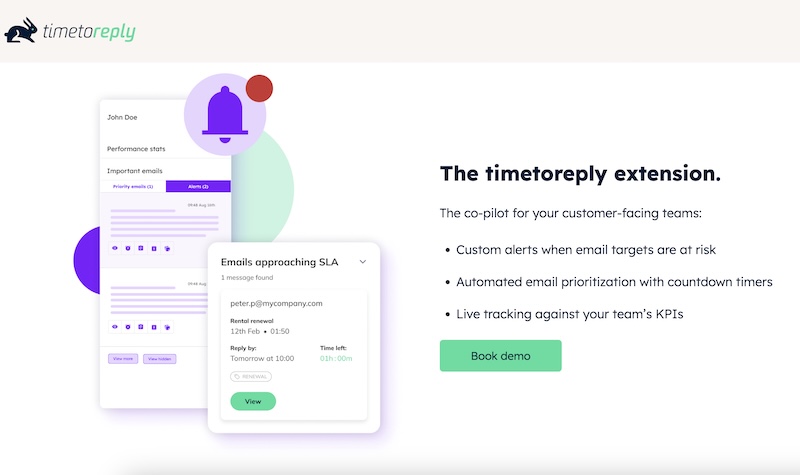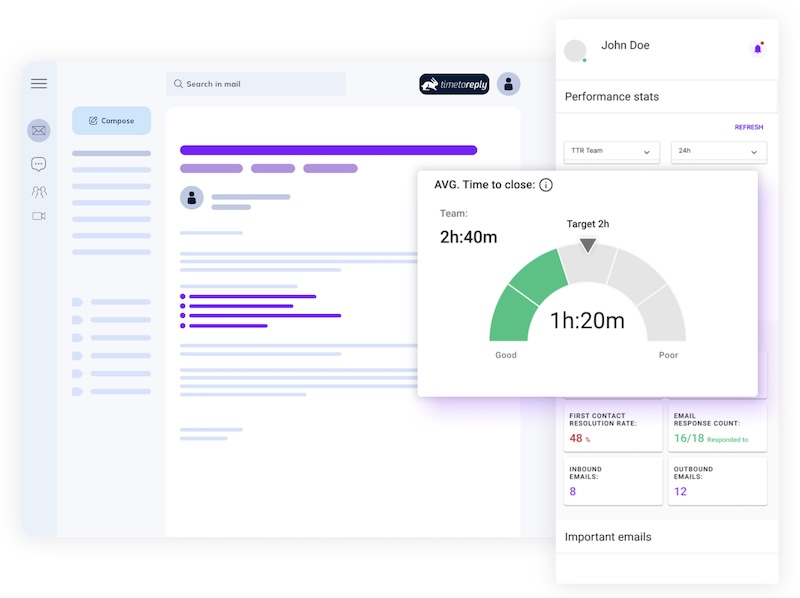Standard email response times matter more than most businesses think. They can shape how people see your brand, affect deals, and even reduce trust if you’re not responsive.
Today’s consumers are used to quick replies. Therefore, ignoring customer emails or replying late might damage your brand reputation.
This post discusses why you should consider implementing a standard email response times policy in your company. We’ll also guide you on how you can create a policy for your brand.
The average email response time for sales leads is 42 hours. Sound slow? It is! Especially when you consider that companies that reply to an inbound sales query within an hour are 60 times more likely to qualify that lead than those that take a day to respond.
In truth, many variables may affect a standard email response times policy, such as whether the email relates to work, a sale, or customer service. Even the age of the responder can make a difference.
Recent statistics show that the number of emails sent and received daily is projected to reach 408 billion by 2027.
It’s clear that email communication is growing, and this is attributed to the fact that businesses are increasingly relying on emails to market their products and services.
The current culture of instant gratification, fueled by low attention span and increased expectations, means many customers would feel frustrated by slow responses. This may even cause them to switch to a more responsive competitor.
Lowering the average response time should be a top priority for every sales and customer service team implementing a standard email response times policy.
Did you know that your chances of converting a lead decrease significantly if you take more than 5 minutes to respond to an email after receiving it? That is right! Improving your sales email response time leads to a better conversion rate and more sales.
You are spending valuable money to generate sales leads. Don’t lose the lead because your team takes too long to respond. This is a waste of valuable marketing spend.
Sales teams should focus on getting that first reply to a prospective customer within an hour. Take any longer, and you risk losing that lead to a more responsive competitor.
Set a benchmark for average sales email response time and measure your sales agents and teams against that. This provides greater transparency over potential bottlenecks and helps sales teams self-manage their performance.
Also Read:
A positive customer experience is one of the most critical factors in a company’s success. Customer experience is considered the crucial deciding factor when it comes to customers choosing between competitors.
A 2024 Salesforce survey shows that a poor customer service experience is the second-biggest reason customers leave a brand.
Business buyers are also affected, with 41% of surveyed buyers refusing to purchase from brands due to poor customer experience.

Image via Salesforce
Customers feel they aren’t all that important to you when customer service requests go unanswered. That’s no way to build long-term loyalty and a happy customer base. Any business that consistently ignores its customers is unlikely to survive in this competitive market.
When customers receive quick and satisfactory responses to their requests, you build goodwill that can improve your retention and drive higher customer loyalty. An appropriate email response time is essential for those who want to offer a top-quality customer experience for their customers.
Up your customer response game by using purpose-designed software. Look for an automation tool that allows you to set custom response time thresholds. Ensure your team receives an alert when an email is approaching that threshold. This way, you will never miss an email or leave it too long.
That’s a lot of communication to keep track of. Email volume is expected to grow due to the rising popularity of remote and hybrid work.
While some teams will use messaging platforms like Slack for internal collaboration, many still choose email as their primary communication channel.
With so many emails to keep track of, it can be hard to ensure you respond within time.
Develop a standard email response times policy to formalise email response time expectations. Put tools in place to track and measure average response times. This provides helpful insights into team performance and areas for improvement.
Many sales and customer service teams face challenges that hinder quick email responses, including:
Many companies don’t have a standard email response times policy in place. When there are no clear guidelines, team members respond when they can. This approach often means response times are slow and inconsistent.
Most major email platforms do not track essential email metrics, such as response times, making it impossible to see where improvements are needed. With timetoreply, companies can track and measure average email response times and team members’ performance regardless of which email platform is used.
When companies receive many emails, it is essential to understand which emails should get the most attention first. High-value emails require immediate attention, whilst low-value emails can be put into the queue. If teams spend too much time on low-value email tasks, unnecessary bottlenecks occur, which negatively impact customer satisfaction.
Also Read:
A professional email response time policy is a company’s formal commitment to quickly and efficiently respond to customer and prospect emails.
With a standard email response times policy, your customer service and sales teams will have clear guidance over the time allowed between incoming queries and their responses.
This helps maintain high levels of customer service and improves sales teams’ success.
How we communicate – in business and life – has changed markedly over the past few years. Remember a time before smartphones and social media? Staying in touch with people was a lot harder back then.
Today, companies use various communication tools and platforms to maintain contact with teams and ensure high levels of support to customers and prospects.
However, email is still hugely important, and so is the email response time. More people and companies prefer email over any other channel.
The ability to respond quickly to customer questions or follow up with an inbound sales lead can directly contribute to business success. That’s why leading companies have a standard email response times policy guiding their teams on how quickly they need to respond to emails.
Companies can unlock amazing benefits by implementing a reasonable standard email response times policy and implementing it properly. Let’s look at the top benefits of having a quick email standard reply time.
Benefit #1 – Boost customer loyalty
Great customer service is the foundation of good customer retention strategies. When customers receive high levels of care, they are more likely to purchase from you again. A survey by Qualtrics estimated that businesses worldwide risked losing $3.7 trillion due to improper customer care.
A quick email reply time is essential to every successful customer service strategy. Helping customers find information quickly or resolve issues creates a smooth, positive customer experience that boosts customer loyalty.
Benefit #2 – Close more sales
Fast email reply times ensure every prospective customer gets the information, care, and attention they need. When prospective customers receive high levels of care during the sales process, they’re more likely to purchase more in the future.
Additionally, satisfied customers are more likely to recommend you to friends and colleagues. This further underlines the importance of having a standard email response times policy.
You can measure your average response time by tracking the time it takes for a customer to receive a response to their email.
Tools, such as timetoreply, track first response times, average response times over a series of emails, and the time taken to resolve a customer request. For example, you can use the timetoreply extension to set up custom alerts for urgent emails.

Image via timetoreply
The timetoreply Optimiser tool by timetoreply is designed to help individuals and businesses track and measure their email performance to improve speed and efficiency. Once installed, sales reps can easily track which emails require urgent attention and which still need a response while measuring their performance against SALs and colleagues.

Image via timetoreply
Timetoreply Optimiser integrates with all major email platforms. A quick installation (no training necessary) is all you need to effectively measure response times, allowing you to carefully implement your standard email response times policy and boost sales.
Also Read:
1. How long is it acceptable to wait to reply to an email?
The acceptable length of time one should wait to reply to an email is between 24 and 48 hours during the workweek. However, the standard email response times policy is to respond sooner if it’s urgent.
2. What is the 24-hour rule for emails?
The 24-hour rule for emails just means you should try to reply within one business day. It’s the unspoken norm to keep things moving without overwhelming your customers or losing their interest. That’s why this is the standard email response times policy for most companies.
3. How soon should an email be replied to?
Most people expect an email reply within 24 to 48 hours, especially during the workweek. If it’s something urgent or time-sensitive, replying right away is recommended, usually aiming for replies within a business day as per the standard email response times policy.
4. What is the email response policy?
A standard email response times policy sets the basic rules for how quickly professionals and businesses should reply to messages. It helps everyone stay on the same page. If things get busy, even a short reply saying you’ll follow up later is better than silence.
5. Does a standard email response times policy apply during weekends?
Usually, a standard email response times policy doesn’t apply during weekends — unless your team works weekends as well, which is quite common in the retail industry. That said, it’s acceptable for most businesses to respond on Monday or Tuesday if a customer emails them on Friday.
Also Read:
A standard email response times policy is a fantastic way to improve your customer service and increase sales.
Teams that track and measure their email performance against a standard email response times policy can more easily make improvements that raise the bar on customer service.
Schedule a demo now and discover the future of elevated communication strategies!
Get live inbox alerts and reply quickly to customer emails with timetoreply